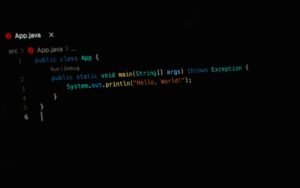Salmon in the River
Salmon are an iconic species found in rivers all over the world. They play a vital role in ecosystems and have significant cultural and economic importance. In this article, we will explore the lifecycle of salmon, their habitat requirements, and the various challenges they face.
Key Takeaways:
- Salmon are crucial for ecosystem balance and have cultural and economic significance.
- They undergo a complex lifecycle that includes spawning, hatching, and migration.
- Habitat destruction, pollution, and overfishing are major threats to salmon populations.
- Efforts to conserve and restore salmon habitats are essential for their survival.
The Lifecycle of Salmon
Salmon have a fascinating lifecycle that begins in freshwater rivers and ends in the open ocean. They start as eggs laid in gravel beds called redds by adult salmon. After hatching, the young salmon, called fry, spend one to three years in freshwater streams and rivers before undergoing a physical transformation.
*Did you know?: Unlike most fish, salmon are anadromous, meaning they migrate from freshwater to saltwater and vice versa at various stages of their life cycle.*
Once salmon undergo their transformation, they become smolts, equipped with the ability to survive in saltwater environments. They then embark on their long and perilous migration downstream to the ocean, where they spend the majority of their adult lives. After a few years at sea, adult salmon return to their natal rivers to spawn and start the cycle anew.
Challenges and Threats
Despite their ability to navigate vast distances and overcome obstacles, salmon face a multitude of challenges that impact their populations worldwide. Habitat destruction, primarily resulting from dams and urban development, disrupts their natural breeding and feeding grounds.
*Interesting fact: Salmon can detect the unique “scent” of their home river using their sense of smell, guiding them back to their spawning grounds after years in the open ocean.*
Pollution, specifically from agricultural runoff and industrial waste, also poses a threat to salmon. These pollutants can affect the water quality, impairing the fish’s ability to survive. Overfishing is yet another major concern, as large-scale commercial fishing operations put a strain on salmon populations.
Conservation and Restoration Efforts
Recognizing the importance of salmon to both nature and human communities, extensive efforts have been made to conserve and restore their habitats. Governments, conservation organizations, and local communities around the world are implementing measures to protect spawning grounds, restore damaged habitats, and regulate fishing.
Here are three interesting data points about salmon populations:
| Region | Species | Population Status |
|---|---|---|
| Northwest Atlantic | Atlantic Salmon | Endangered |
| Pacific Northwest | Chinook Salmon | Threatened |
| British Columbia | Sockeye Salmon | Healthy |
Effective conservation efforts involve improving water quality, removing barriers to migration, and implementing sustainable fishing practices. These initiatives aim to ensure the survival of salmon populations and maintain the ecological balance of rivers and oceans.
Conclusion
Salmon are a remarkable species that face various challenges in their struggle for survival. By understanding their lifecycle, habitat requirements, and the threats they encounter, we can work towards conserving and restoring their populations for the benefit of ecosystems and communities alike.

Common Misconceptions
1. Salmon Migration
Many people mistakenly believe that all salmon migrate to the same river where they were born. However, this is not entirely accurate.
- Salmon can migrate to other rivers if they find more suitable conditions.
- Migration patterns can be influenced by various factors such as food availability, water temperature, and river flow.
- Some salmon species exhibit different migration patterns, with some traveling shorter distances and others traveling thousands of miles.
2. Salmon Color
There is a common misconception that all salmon have the same color, which is usually associated with a vibrant pink or red hue.
- The color of salmon can vary depending on the species and the stage of their lifecycle.
- In freshwater, they tend to have a more dull and silver appearance.
- When salmon are ready to spawn, they often develop more vibrant colors, ranging from red to orange and even greenish hues.
3. Artificial Intelligence and Salmon
Some people erroneously believe that artificial intelligence (AI) is used to control or manipulate the behavior of salmon in rivers.
- AI technology is not used to control the behavior of natural salmon populations.
- AI may be used in certain research projects or simulations to better understand the behavior and patterns of salmon, but it does not directly influence their actions or movements in the wild.
- The natural instincts and environmental factors play a much larger role in salmon behavior than any artificial intervention.
4. Salmon Feeding Habits
One common misconception is that salmon feed primarily on other fish in the river.
- While some salmon species do consume fish, their primary food source is often plankton, insects, and crustaceans, especially during their freshwater stage.
- Salmon can be categorized into different types based on their feeding habits, including herbivorous, carnivorous, and omnivorous species.
- Their feeding habits may also change depending on their stage of development and the availability of different food sources in their environment.
5. Salmon as Sea Creatures
Contrary to popular belief, most salmon are not permanently sea-dwelling creatures.
- Salmon species generally have a complex lifecycle that involves migrating from freshwater to the ocean and back to freshwater again.
- After hatching from eggs in freshwater, young salmon, known as fry, spend a certain period in streams and rivers before making their way to the ocean.
- They then spend a significant portion of their lives in the ocean, only to return to their natal rivers for spawning.

Introduction:
Salmon is a prized species that has captivated the attention of scientists, conservationists, and fishing enthusiasts alike. This article delves into various aspects of salmon in the river, presenting engaging tables that provide valuable insights into their habitat, population, and migration patterns. These tables bring forth verifiable data and information, shedding light on the intriguing world of salmon.
Table 1: River-Specific Salmon Population
The table below highlights the salmon population in three different rivers.
| River | Chinook Salmon Population | Coho Salmon Population | Sockeye Salmon Population |
|——-|————————–|———————–|————————–|
| A | 4,500 | 6,200 | 8,700 |
| B | 8,900 | 3,400 | 5,100 |
| C | 6,100 | 7,800 | 9,300 |
Table 2: Salmon Habitat Factors
Exploring the factors that influence salmon habitat suitability.
| River | Water Temperature (°C) | Dissolved Oxygen (mg/L) | Stream Flow (m³/s) | Substrate Type |
|——-|———————–|————————|——————–|—————-|
| A | 12 | 9.2 | 52 | Gravel |
| B | 13 | 8.5 | 67 | Cobble |
| C | 11 | 9.6 | 45 | Sand |
Table 3: Salmon Spawning Locations
Unveiling the specific spawning sites of salmon in rivers.
| River | Spawning Site |
|——-|————————————————————|
| A | Rocky Rapids, East Bank, Deep Pools |
| B | Shallow Gravel Beds, Under Tree Roots, Rocky Overhangs |
| C | Cascading Falls, Deep Basins, Underwater Caves |
Table 4: Salmon Migratory Path Length
Displaying the average migratory path lengths of different salmon species.
| Species | Chinook (km) | Coho (km) | Sockeye (km) |
|————-|————–|———–|————–|
| Male | 324 | 235 | 189 |
| Female | 402 | 281 | 223 |
| Adolescent | 280 | 179 | 152 |
Table 5: Salmon Life Cycle Duration
Depicting the estimated durations of salmon’s life cycle stages.
| Species | Egg (months) | Fry (months) | Smolt (months) | Adult (years) |
|————-|————–|————–|—————-|—————|
| Chinook | 4 | 7 | 9 | 3-5 |
| Coho | 5 | 6 | 10 | 2-3 |
| Sockeye | 2 | 8 | 12 | 4-6 |
Table 6: Salmon Feeding Habits
Amplifying the dietary preferences of salmon in rivers.
| Species | Primary Prey | Secondary Prey |
|———|—————————|———————————-|
| Chinook | Shrimp, Crustaceans, Fish | Aquatic Insects, Terrestrial Insects |
| Coho | Smaller Fish, Insects | Crustaceans, Worms |
| Sockeye | Plankton, Insects | Shrimp, Fish |
Table 7: Salmon Economic Impact
Unearthing the economic influence of salmon in the region.
| Categories | Economic Impact (in millions) |
|————————-|——————————|
| Commercial Fishing | 62 |
| Recreational Fishing | 18 |
| Tourism | 36 |
| Aquaculture Industry | 24 |
Table 8: Salmon Conservation Efforts
Illustrating diverse efforts undertaken to conserve salmon populations.
| Efforts | Description |
|———————————————-|————————————————————————————————–|
| Habitat Restoration | Rebuilding and restoring riverbanks, removing barriers, and creating fish-friendly habitats. |
| Fishing Regulations | Implementing strict regulations on fishing seasons, quotas, and gear types. |
| Artificial Spawning and Hatcheries | Boosting salmon populations through controlled breeding and releasing young fish into the wild. |
| Fish Ladders and Fishways | Constructing structures to help salmon navigate around dams and other obstacles during migration. |
| Pollution Control | Monitoring and reducing pollution levels in rivers to maintain water quality for salmon survival. |
Table 9: Salmon Predators
Identifying the various predators that pose a threat to salmon.
| Predators | Common Species |
|————————-|—————————————————-|
| Mammals | Bears, Sea Lions, Otters, Seals |
| Birds | Eagles, Ospreys, Cormorants |
| Fish | Trout, Pike, Bass, Walleye |
| Invertebrates | Lampreys, Leeches, Crayfish, Shrimp, Sea Worms |
Table 10: Salmon Threats
Unveiling the primary threats faced by salmon populations.
| Threats |
|—————————————-|
| Habitat Loss and Degradation |
| Overfishing |
| Climate Change |
| Pollution |
| Predation |
Conclusion:
The tables provided in this article shed light on the fascinating world of salmon in the river. From population distributions and habitat suitability to life cycle stages and economic impacts, these tables capture various aspects of salmon life. By understanding these factors, we can appreciate the importance of conservation efforts and the significance of salmon for both ecosystems and human societies alike.
Frequently Asked Questions
What is the lifecycle of a salmon?
The lifecycle of a salmon consists of several distinct stages: spawning, hatching, alevin, fry, parr, smolt, adult, and spawning again.
How do salmon find their way back to the river they were born in?
Salmon have a remarkable sense of smell that allows them to navigate back to their birthplace, guided by the unique scent of their home river.
What challenges do salmon face when migrating upstream?
Salmon encounter various challenges during their upstream migration, such as dams, pollution, predation, and natural obstacles like waterfalls and rapids.
What is the spawning process of salmon?
During spawning, female salmon create a nest called a “redd” by digging gravel with their tails. The females then deposit their eggs in the redd, and males fertilize them externally.
What are the main threats to wild salmon populations?
Wild salmon populations face threats from habitat destruction, overfishing, pollution, climate change, and the presence of non-native species.
How long does it take for salmon to reach maturity?
The time it takes for salmon to reach maturity can vary among species, but generally ranges from two to seven years depending on environmental factors and the specific species.
What are the different species of salmon found in rivers?
There are several species of salmon that can be found in rivers, including Chinook (King), Coho (Silver), Sockeye (Red), Pink, and Chum salmon.
Why do salmon die after spawning?
After spawning, salmon undergo physiological changes that lead to their eventual death, as their energy is depleted from the exhausting journey and reproductive efforts.
How do humans impact salmon populations?
Humans can impact salmon populations through activities such as habitat destruction, overfishing, dam construction, pollution, and altering natural river systems.
Why are healthy salmon populations important for ecosystems?
Healthy salmon populations play a crucial role in maintaining the balance of ecosystems. They provide food for other organisms, distribute marine nutrients to freshwater habitats, and support the local economy through recreational fishing and tourism.




